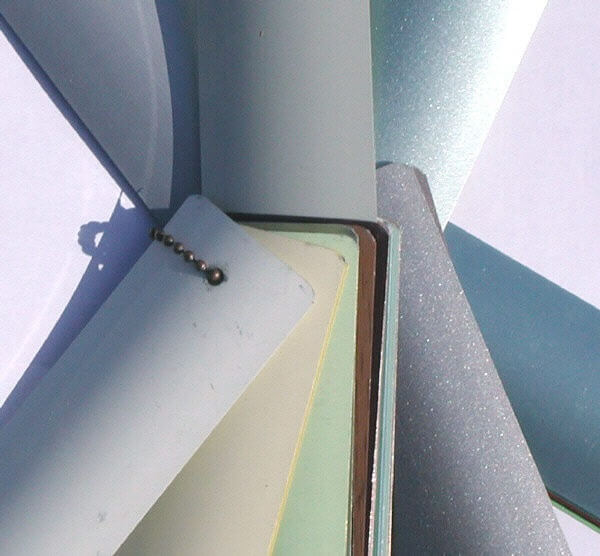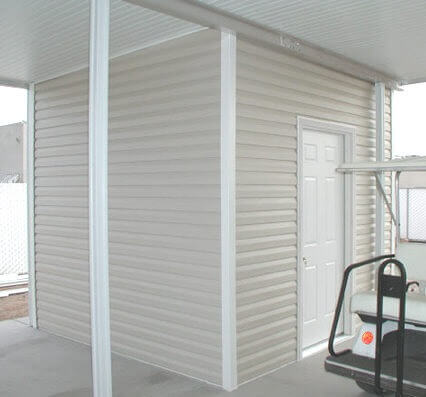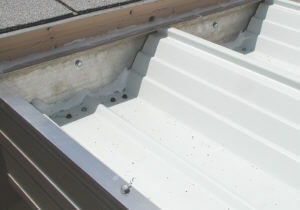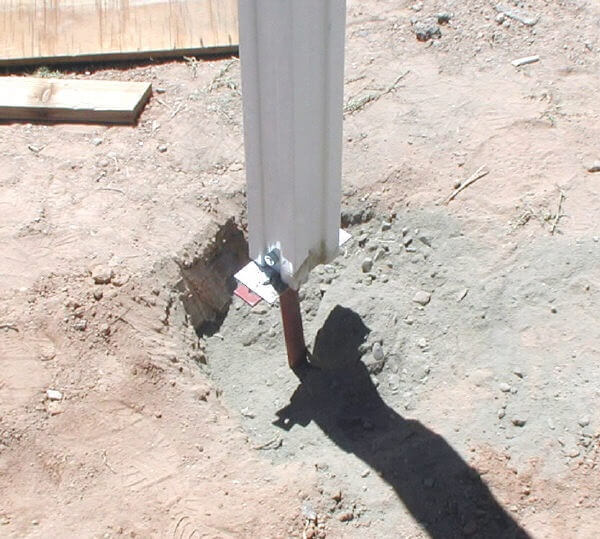Awnings FAQ
Answering Your Awning Questions
1. What are the color choices with an aluminum awning?
The color choices can be many or just a few. The panels are the cover material itself and you will usually get a few color options. They are mostly white, neutral or sometimes tan or brown. Sometimes a stared pattern is an option or you may be able to get an embossed look.

The posts that hold the awning up are usually white or neutral color. Sometimes you may find wood grain posts.
2. How can I make my awning stronger?

Extruded framework is heavier and stronger than roll form. Using bolts instead of screws to attach the post brackets to the gutter and the posts to the brackets is always preferred. Steel posts could be used instead of aluminum and the post brackets could be changed to steel also. Four concrete anchors per post could be used instead of the usual two. If the awning is to be anchored into the ground using a larger safety stake and extra concrete is helpful.
Adding screen rooms, sheds and other structures under the awning will allow the awning to be screwed down in many more places. If you use neoprene washers with the screws, the screws will seal themselves automatically and the washers will add a lot of hold down strength to the panels.
I-beams are a great way to make an awning stronger. Beams come in different sizes. The size of the beam determines the distance the posts under it need to be spaced apart. A 4" beam should not have more than 10' between posts where an 8" beam could easily go 20' between posts. The addition of a beam to an awning gives the awning strength in two ways. Attaching the panels to the beam with screws and neoprene washers gains a lot of hold down strength against wind damage. The extra support under the panels provides more support for heavy rain and snow.
3. What types of panels are available for aluminum awnings?

Most awning manufacturing companies will produce these pans in either a white or a neutral color. Sometimes stars are an option.
Awning panels are made in stock lengths such as 8', 9' and on up to about 20'. These panels can either be cut on the jobsite for an exact fit or custom lengths can be ordered.
4. Do I need a concrete slab to mount the posts on?

5. What type of hanger do I need for attaching to a house?
If the awning is to be attached to a fascia board that is set at a pitch or angle then the hanger should be the type that slides into an a-rail and pivots at that point. That lets the hanger easily follow whatever pitch the awning has. The standard hangers are meant for flat walls and the angle of the part where the panel attaches is already set. It is important for a strong awning that the panels fit into the hanger correctly and are securely fastened.
Do you have an awning question? Please Contact me. I would be happy to help.
In the Mesa Arizona area give me a call for a free awning estimate.
CR Shades - Dennis Gourley - Sales - 480-935-2848